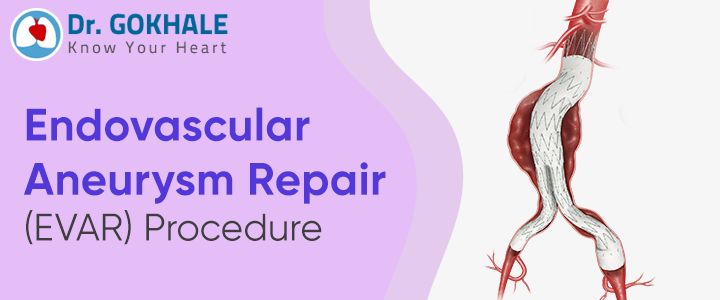Aneurysms pose significant health risks if left untreated. The conventional treatment was open surgery, but advancements in medicine introduced a minimally invasive alternative, endovascular Aneurysm Repair (EVAR). This procedure is more acceptable because of the shorter recovery time and reduced risks. This Article discusses the EVAR procedure.
What is Aneurysm?
Aneurysms occur when the walls of the blood vessels begin to weaken and bulge, especially the aorta which is the large artery that carries blood through the chest from the heart. Heart issues would require you to seek assistance from the best heart transplant surgeon in Hyderabad to find relevant solutions.
When the bulge in the vessel is too big, it is at risk of rupturing and leading to internal bleeding and even death. The cause of weakness in the vessel is not always known, but smoking, high blood pressure and a family history of aneurysms increase the risk. When it reaches 5.5cm or shows rapid growth, it becomes an emergency.
Standard EVAR Procedure
Conventional open surgery would involve replacing the weak aorta with a synthetic graft through a large incision. EVAR, on the other hand, favours a less invasive solution. It can be performed under kick or general anaesthesia. A standard EVAR is used for straightforward abdominal aortic aneurysms with healthy arterial walls for the stent graft. The graft is Y-shaped.
- Pre-procedure Preparation: There would be pre-operative assessments, such as imaging to map the location and size of the Aneurysm, blood tests, and a discussion of risks and defects with the medical team.
- Procedure: The Surgeon would make a small incision in the groin to access the femoral artery. A catheter is then inserted into the artery towards the Aneurysm site using X-ray imaging as a guide. Next, a stent graft is deployed through the catheter to line the aorta and reinforce the weakened wall. The stent graft creates a new pathway, helps restore blood flow to normal, and orients pressure on the Aneurysm.
- Duration: It takes about an hour to two hours.
Other types of EVAR
The type of endovascular aneurysm repair procedure used is dependent on the location, size and complexity of the Aneurysm. Besides the standard procedure, here are other types:
- Fenestrated EVAR (FEVAR): This is for complex aneurysms that involve or are near the renal arteries. It uses a customised stent graft with small openings to preserve blood flow to organs like the kidney.
- Branched EVAR (BEVAR): It is used for aneurysms that extend close to the Thoracic or iliac arteries. It has stent grafts with extended branches to maintain blood flow to other arteries.
- Thoracic EVAR (TEVAR): This is specifically for aneurysms in the chest region ( Thoracic aorta). It is similar to EVAR, but it uses a longer stent graft designed for the Thoracic aorta.
Hybrid Procedure
Sometimes, the upper or lower portion of the aorta, known as the proximal or distal aortic neck, isn’t long or strong enough to securely hold an endograft. In such cases, trying a fully minimally invasive surgery may not be the best option. An Alternative to open surgery in that case would be a hybrid repair. This procedure combines open surgery with EVAR or TEVAR.
Here, the endograft is placed over key aortic branches. Ideally, it would block blood flow to important arteries like those supplying the kidneys, intestines, or head and arms. However, by first surgically creating bypasses to these essential vessels, the procedure ensures uninterrupted blood flow, so the endograft will be placed where it is most needed.
Conclusion
Endovascular Aneurysm Repair (EVAR) Procedure is a safer and minimally invasive alternative to open surgery. It has a shorter recovery time and reduced risks, making it a better option for many patients.
Early detection can be achieved through regular screenings and consulting your health providers, which will save lives. If you need heart transplantation surgery in Hyderabad, connect with Dr Gokhlae today to find immediate solutions.
 Ask Doctor
Ask Doctor
